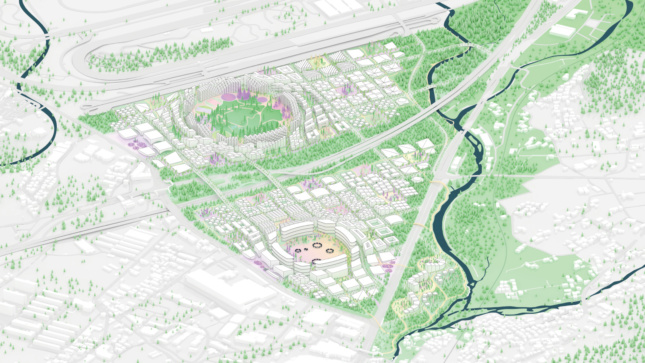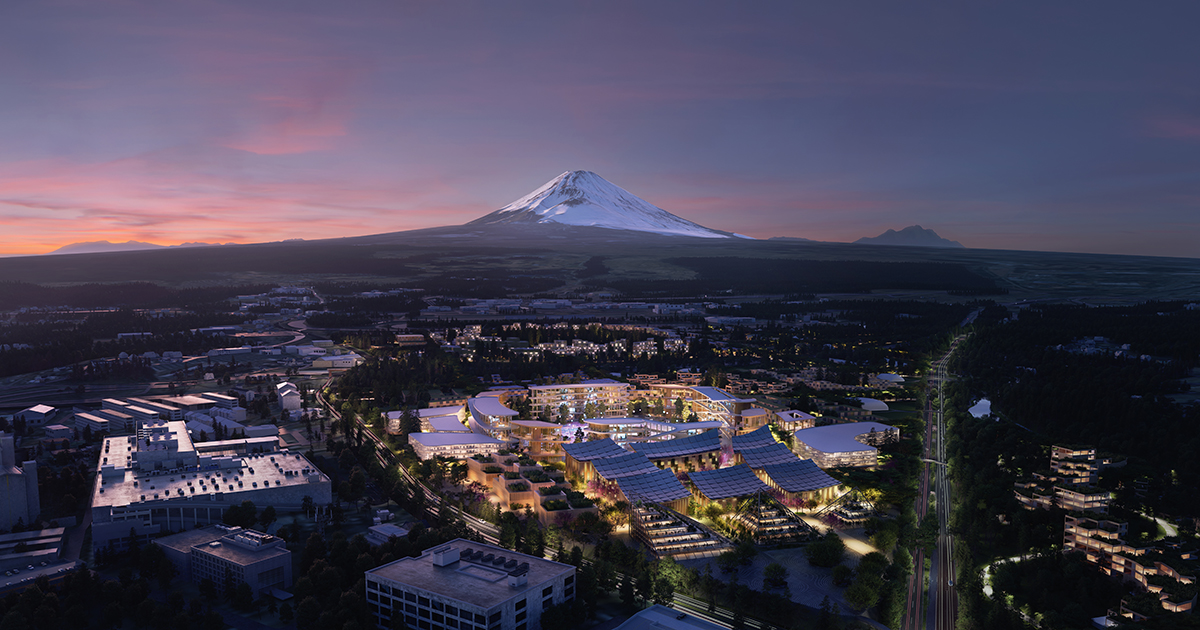Yesterday at the Consumer Electronics Show in Las Vegas, Toyota and BIG unveiled a new concept for a high-tech “Woven City” to be built at the car maker’s 175-acre former factory site at the foothills of Mount Fuji, in Japan.
“In Higashi-Fuji, Japan, we have decided to build a prototype town of the future where people live, work, play, and participate in a living laboratory,” explained Toyota CEO Akio Toyoda in a press release, going on to say that it would be a “smart city that would allow researchers, engineers, and scientists the opportunity to freely test technology such as autonomy, mobility as a service, personal mobility, robotics, smart home connected technology, AI and more, in a real-world environment.” The automotive company plans to invite private and academic researchers to collaborate on the experiment.
To keep it green, the city will use solar power and geothermal energy, along with hydrogen fuel cells. BIG’s buildings—including housing, retail, and office space—will primarily be built with carbon-sequestering mass timber construction, reportedly with a method that combines handcraftsmanship (and a look inspired by the tatami flooring of traditional Japanese architecture) with robotic technology.
The streets, also master-planned by BIG would be, as the name suggests, “woven” into three-by-three blocks, framing courtyards interconnected by a linear park. The grid isn’t meant to be rigid; it can flexibly evolve to contain both large parks and denser buildings. Infrastructure would be buried underground, including a “goods delivery network” Toyota and BIG have coined the “matternet.”

The roads will also be organized in threes themselves: A primary thoroughfare for autonomous vehicles, as well as two other streets, one for transit options like bikes and scooters, and a plant-lined option for pedestrians. The logistical traffic would flow underground, carried by Toyota’s driverless e-Palette vehicle. Beyond moving goods and people, Toyota and BIG also imagine the vehicle could be a mobile site for healthcare, retail, and work.
“A swarm of different technologies are beginning to radically change how we inhabit and navigate our cities,” said Bjarke Ingels in a press release. “Connected, autonomous, emission-free and shared mobility solutions are bound to unleash a world of opportunities for new forms of urban life.” He added that he hoped that Woven City might serve as a prototype for future infrastructure projects in other parts of the world.
Construction on the project is set to begin in 2021.
For more on the latest in AEC technology and for information about the upcoming TECH+ conference, visit https://techplusexpo.com/events/la/






